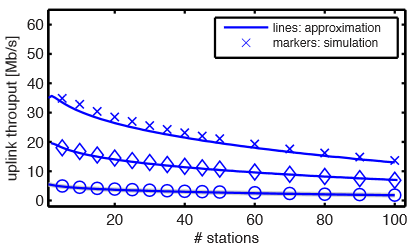Abstract

Spectrum regulation for cellular networks, last-mile wireless broadband access, but also for the new secondary usage of the TV white space, often favor a paired radio spectrum so that different frequency channels are used for down- and uplink (base vs. mobile devices). This setup is also referred to as frequency division duplex. However, such a setup makes it difficult to apply contention-based protocols like those standardized by IEEE 802.11, because they were designed so that downlink and uplink share the same frequency channel. Yet the simplicity of the 802.11 protocol and its decentralized operation make it attractive for smart grid and consumer electronics applications using TV white space or licensed spectrum. Therefore we investigate a contention-based 802.11-like protocol for paired spectrum. We leverage its downlink-uplink separation into a protocol design that combines contention-based distributed medium access with a managed reaction to packet collisions. We also demonstrate why this paired spectrum approach is relevant and desirable for TV white space secondary spectrum access. The main advantages of this protocol are (1) enabling the usage of simple and low cost contention-based 802.11-like devices in paired spectrum, (2) providing collision detection management in the uplink, and (3) an inherent resource reservation for downlink traffic. The evaluation results confirm the validity of the proposed protocol design and demonstrate the benefits obtained from collision detection management.
Copyright Notice
The documents contained in these directories are included by the contributing authors as a means to ensure timely dissemination of scholarly and technical work on a non-commercial basis. Copyright and all rights therein are maintained by the authors or by other copyright holders, notwithstanding that they have offered their works here electronically. It is understood that all persons copying this information will adhere to the terms and constraints invoked by each author’s copyright. These works may not be reposted without the explicit permission of the copyright holder.